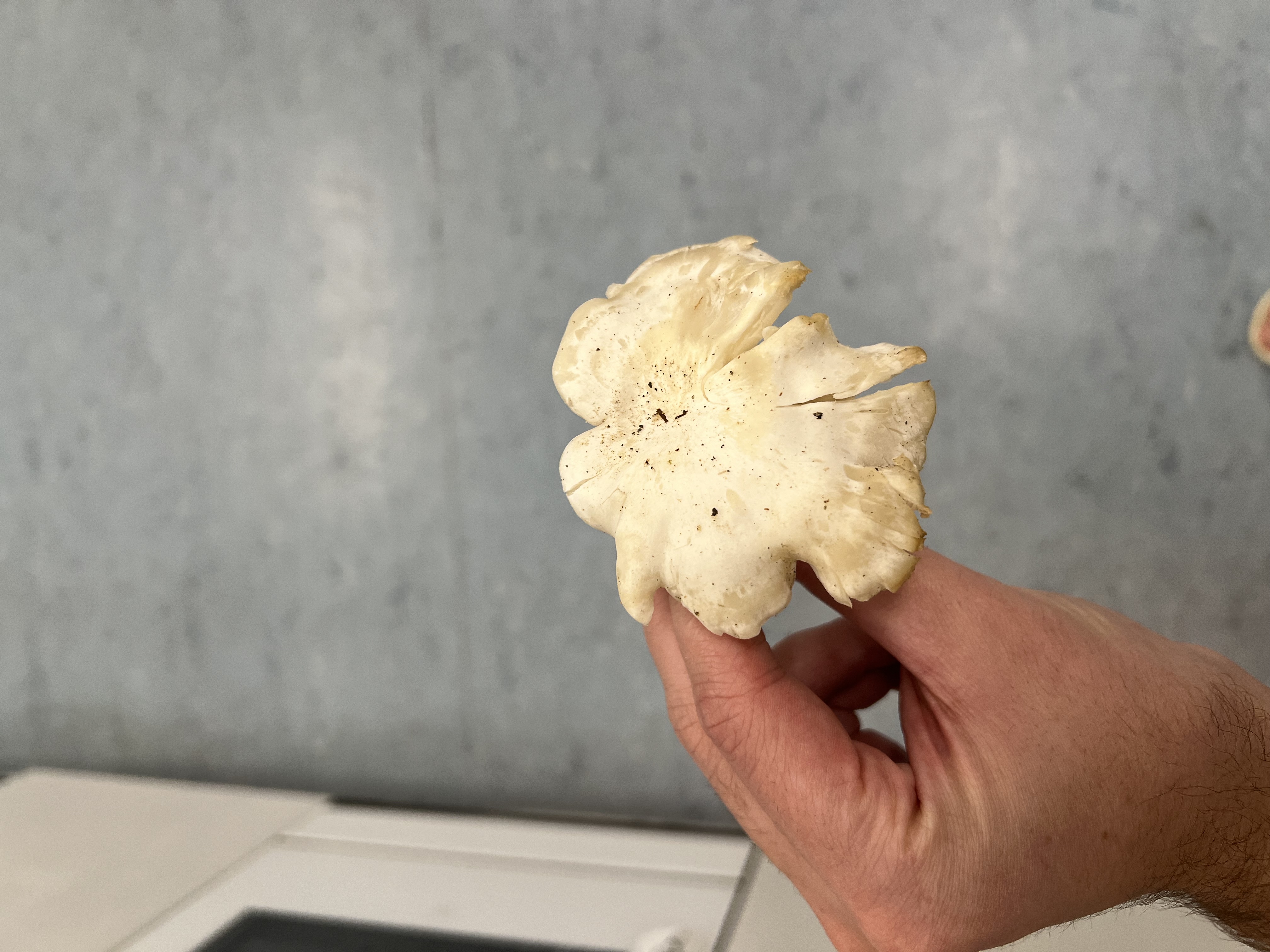Oyster Mushroom
Pleurotus ostreatus
Identification of Pleurotus Species (Oyster Mushroom)

1 / 4
All Images (4)
Key Features
- Cap is irregular
- lobed
- and wavy
- Gills are crowded
- white to cream
- and deeply decurrent
- Stem is short
- thick
- and eccentric or lateral
- Flesh is firm and white
- Typically grows in dense
- overlapping clusters on wood
Color:
Cream to pale buff/white
Smell:
Unknown
Growth Pattern:
Clustered
Environment:
Wood
Habitat & Distribution
Habitat:
Deciduous wood, logs, or stumps
Distribution:
Cosmopolitan, common across Europe
Seasonality:
Autumn to Spring (P. ostreatus) or Spring to Autumn (P. pulmonarius)
Critical Features for Confirmation
- Spore print color not assessed
- Exact growth substrate not confirmed (critical for distinguishing lookalikes)
Economic Value
Market Demand:
High - Widely cultivated and consumed globally
Price Range:
$5-15/lb fresh
Commercial Use:
Foodstuff, culinary ingredient, and medicinal research
Similar Species
Angel Wing
Pleurocybella porrigens
Key Differences:
- Grows primarily on conifer wood
- Lacks a substantial stem; thinner and more delicate structure
Ghost Fungus
Omphalotus nidiformis
Key Differences:
- Not native to Europe (primarily Australia/Asia)
- Glows in the dark (bioluminescent)
Recommended Action
Do not consume without expert confirmation. Verify spore print color (white to lilac) and confirm growth substrate (hardwood).